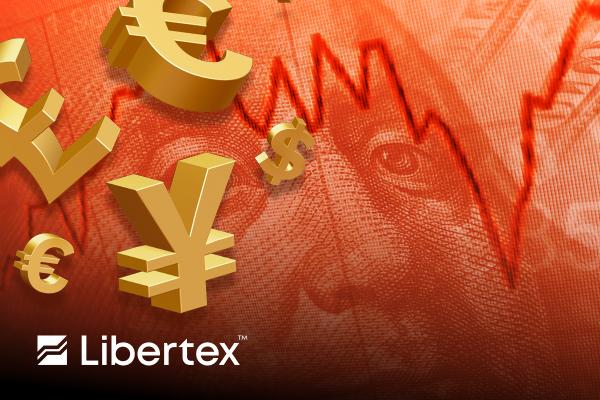Since 2020, it's been a period of perpetual uncertainty for the entire globe. Once the coronavirus crisis came to an end, the world was plagued by runaway inflation, forcing central banks to take severe action to raise interest rates. No regulator was swifter or more aggressively hawkish than the US Federal Reserve. That fast action appeared to pay dividends in the form of a rapid reduction in inflation to near-target levels without compromising the labour or stock markets. This naturally caused a rapid strengthening of the dollar in 2022, even bringing the greenback to historic parity with the euro and multi-year highs against all of its closest competitors, from the Aussie dollar to the British pound.
Now, just 18 months later, the US national currency is losing ground against virtually all of the world majors at an alarming rate. Treasury bond yields are at their lowest level in two years, and it seems as if a normalisation on the forex market is close at hand. But what are the factors driving these moves and the implications for currency investors, and where are the major pairs likely to be headed during the rest of 2024?
It's all political
After a string of rate hikes to deal with inflation, the Fed has been holding steady for several months now. With inflation now stable, rumours have been circulating about a Fed rate cut. Although Fed Chairman Jerome Powell has stated that we shouldn't expect this to come in March, the CME Group's FedWatch Tool estimates the probability of a cut by May at 96%.
It's important to note, however, that the US regulator was much more aggressive when it came to rate increases back in 2021-2022. Even now, US interest rates are almost a full percentage point higher than in the eurozone. Nonetheless, the psychological effect of a pivot from raising to reducing rates will always exaggerate the impact on national currencies. That said, the EUR/USD pair has still gained almost 3% in the last month, showing that markets recognise the dollar's overall better health compared to the euro.
Meanwhile, the tone of the Bank of England, which famously followed the Fed's lead and hiked aggressively, remains hawkish. There is no firm commitment from the BoE to cut its current interest rate of 5.25-5.5%, and this has been reflected in the Cable, which has gained almost 5% since November 2023. The RBA, like the ECB, on the other hand, only hiked its rate to 4.35% before moving to a wait-and-see approach. It seems that this has harmed the Aussie's progress against its US counterpart, with the AUDUSD slipping 5% to 0.65 YTD. If a rate cut does come before May, we should see a normalisation of these pairs to the pre-pandemic averages.
Beyond the banks
In addition to the impact of the major central banks' monetary policy, movements in much of the rest of the world are driven by other factors that are often overlooked. Huge economies such as China and India, for instance, are highly sensitive to domestic factors, developments in the commodities market, and global industrial sentiment. The rupee, for example, has managed to make modest gains against the US dollar of late amid the announcement of a favourable national budget that sets lower-than-expected fiscal deficit and gross borrowing targets for the financial year starting April 1. The industrial PMIs of both India and China have been rising for the past two months to reach 56.90 and 49.20, respectively, which has naturally helped to maintain the strength of the countries' national currencies. China's renminbi has also received a separate boost in the form of wider adoption as a trading currency in the rest of the world, where it is fast taking market share away from the dollar. In the past two years, the yuan's share of Russia's exports has increased from 0.4% to 34.5%, and efforts to expand BRICS further could lead to additional increases in RMB's appeal.
Meanwhile, a traditional haven currency, the Japanese yen, has had a torrid time over the past two years. Having failed to increase rates sufficiently, the BoJ has overseen a nearly 25% reduction in the yen's value since January 2022. Following a more hawkish post-meeting speech by Governor Kazuo Ueda in January and a second consecutive month's growth in the Manufacturing and Services PMIs, the JPY/USD pair looks like it could be reaching a turning point after testing the 50-day SMA. As always, it would make sense for forex investors to diversify in order to maximise their protection from volatility in individual currency pairs.
Trade CFDs with Libertex
Libertex is a multi-award-winning CFD broker offering trading in a wide range of underlying asset classes from stocks, commodities, and crypto to indices. With Libertex, you can trade CFDs in EUR/USD, AUD/USD, GBP/USD, and USD/JPY, not to mention the US Dollar Index itself. For more information or to create an account of your own, visit www.libertex.com/signup today!


